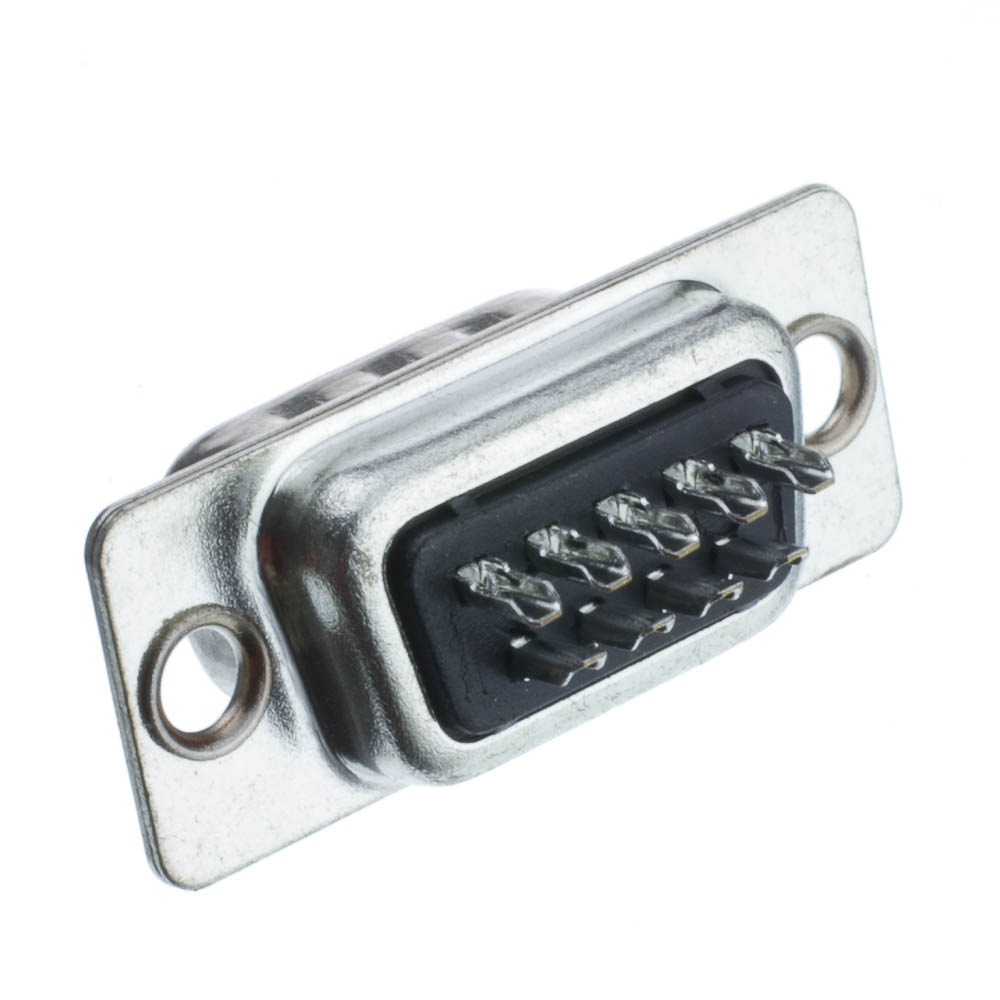

DB-9 nearly always refers to a 9-pin connector with an E size shell.

It is now common to see DE-9 connectors sold as DB-9 connectors.
DB9 CONNECTOR SERIAL
Because personal computers first used DB-25 connectors for their serial and parallel ports, when the PC serial port began to use 9-pin connectors, they were often labeled as DB-9 instead of DE-9 connectors, due to an ignorance of the fact that B represented a shell size. However, this naming pattern is not always followed. These each have three rows of pins, except the DD-100, which has four.
DB9 CONNECTOR SERIES
The double density series of D-sub connectors features even denser arrangements and consists of the DE-19, DA-31, DB-52, DC-79, and DD-100. They all have three rows of pins, except the DD-78 which has four, and the DF-104 which has five rows in a new, larger shell. The other connectors with the same pin spacing are the DA-26, DB-44, DC-62, DD-78 and DF-104. The pins are spaced at 0.090 inches (2.3 mm) horizontally and 0.078 inches (2.0 mm) vertically, in what is called high density. For example, the DE-15, usually found in VGA cables, has 15 pins in three rows, all surrounded by an E size shell. Later D-sub connectors added extra pins to the original shell sizes, and their names follow the same pattern.

The suffixes M and F (for male and female) are sometimes used instead of the original P and S for plug and socket. The contacts in each row of these connectors are spaced 326/3000 of an inch apart, or approximately 0.1087 inches (2.76 mm), and the rows are spaced 0.112 inches (2.84 mm) apart the pins in the two rows are offset by half the distance between adjacent contacts in a row. For example, DB-25 denotes a D-sub with a 25-position shell size and a 25-position contact configuration. Each shell size usually (see below for exceptions) corresponds to a certain number of pins or sockets: A with 15, B with 25, C with 37, D with 50, and E with 9. Cannon's part-numbering system uses D as the prefix for the whole series, followed by one of A, B, C, D, or E denoting the shell size, followed by the number of pins or sockets, followed by either P (plug or pins ) or S (socket) denoting the gender of the part. The D-sub series of connectors was introduced by Cannon in 1952. This creates an electrically continuous screen covering the whole cable and connector system. When screened cables are used, the shields are connected to the overall screens of the cables. Occasionally the nuts may be found on a cable end connector if it is expected to connect to another cable end (see the male DE-9 pictured).

Panel mounted connectors usually have #4-40 UNC (as designated with the Unified Thread Standard) jackscrews that accept screws on the cable end connector cover that are used for locking the connectors together and offering mechanical strain relief, and can be tightened with a 3/16" (or 5mm) hex socket. The socket's shield fits tightly inside the plug's shield. D-sub connectors have gender: parts with pin contacts are called male connectors or plugs, while those with socket contacts are called female connectors or sockets. A D-sub contains two or more parallel rows of pins or sockets usually surrounded by a D-shaped metal shield that provides mechanical support, ensures correct orientation, and may screen against electromagnetic interference.


 0 kommentar(er)
0 kommentar(er)
